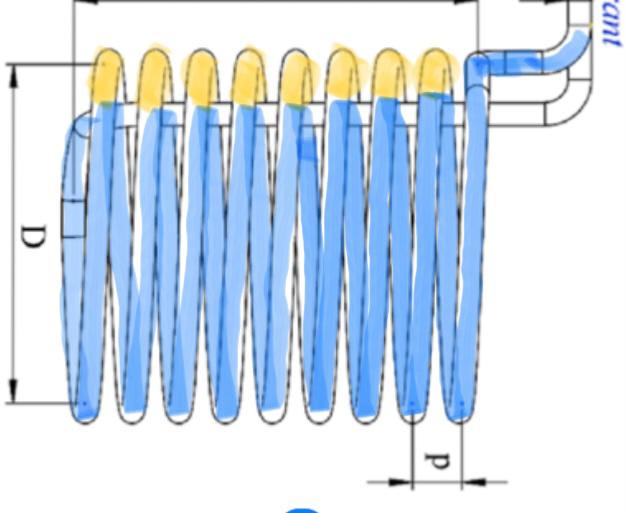I'm conducting a hydro test on a coil system and need guidance on determining the appropriate pump size. The objective is to pump water through the coil with a flow rate sufficient to eliminate air pockets that tend to form at the top of the coil (see yellow in image below).

Here are the essential details about the coil:
The inlet and outlet of the coil are at the same height, 1 meter off the ground.
Outer Diameter of the pipe: 75mm
Inner Diameter of the pipe: 70mm
Diameter of the coil: 1m
Length of the coil: 3m
Based on a simulation, it's evident that a sufficiently high flow rate can remove all the air from the system. Can anyone advise on how to calculate the required flow rate to achieve this goal? I also want to ensure that the coil remains entirely filled with water throughout the process. Any insights on making this calculation better and more concise are welcome. Thank you!

Here are the essential details about the coil:
The inlet and outlet of the coil are at the same height, 1 meter off the ground.
Outer Diameter of the pipe: 75mm
Inner Diameter of the pipe: 70mm
Diameter of the coil: 1m
Length of the coil: 3m
Based on a simulation, it's evident that a sufficiently high flow rate can remove all the air from the system. Can anyone advise on how to calculate the required flow rate to achieve this goal? I also want to ensure that the coil remains entirely filled with water throughout the process. Any insights on making this calculation better and more concise are welcome. Thank you!
